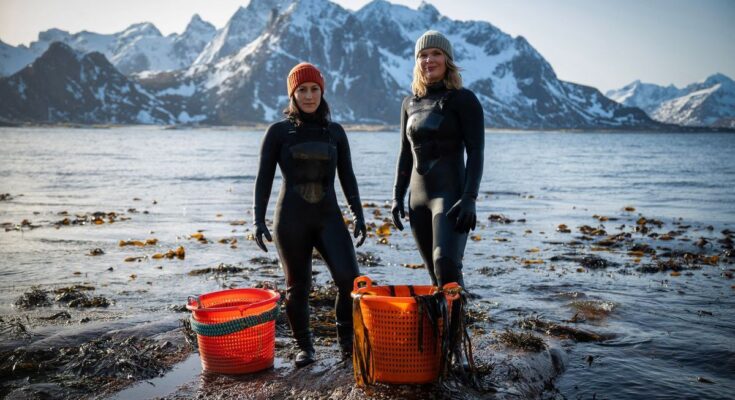Immersed in the freezing water of the Lofoten archipelago in northern Norway, Angelita Eriksen harvests a handful of algae with a knife that will end up on the plate of a European gourmet restaurant.
“We have the clearest and cleanest waters in Europe and we are lucky to have this resource growing on our doorstep. We want to show it to the rest of the world“, she explains from the drying workshop.
Norwegian and daughter of a fisherman, Eriksen teamed up with Tamara Singer, daughter of a Japanese woman who cooked seaweed for every meal, to develop their company, Lofoten Seaweed, specializing in harvesting and preparing seaweed for food.
With the help of six people, they harvest 11 tonnes of seaweed by hand per year, the high season extending from the end of April to June, in what they describe as “physical work”.
“We harvest dulse, nori and truffle seaweed in autumn and winter. It's cold and we stay for an hour“Outside along the coast with my lower legs in the water,” she explains.
“But at the end of May, in high season, I sweat while working in overalls and when I take off my gloves, steam comes out“, adds the producer.
“It's physically challenging but at the same time it inspires meditation“, says Angelita Eriksen.
“Delicate pulp”
Truffled seaweed, winged kelp, sweet kelp, dulse, nori, Oarweed kelp: the female duo focuses on around ten varieties of seaweed, a food long enjoyed in Japan and whose nutritional quality is gradually conquering Europe.
The seaweed is sold locally or shipped to gourmet restaurants in Norway and the rest of Europe.
The two women organize introductory workshops to educate chefs about the subtlety of seaweed.
“Seaweed is like vegetables, it has its own texture, its own taste, its own color“, explains Tamara Singer.
The entrepreneur shares her “huge surprise” in front of the number of European chefs they had to introduce to the tastes and preparation of different varieties of seaweed.
Conversely, both women worked with Japanese chefs.who know exactly what they want to do“with the algae. For them, “it's like giving a piece of fish to a northern Norwegian“, she laughs.
About 20 kilometers away, chef Josh Wing has been cooking Lofoten Seaweed for five to six years at his upscale restaurant Hattvika Lodge. He did not need to participate in training for his suppliers.
He appreciates “the very delicate pulp of the dulse“which it serves with local fish dishes or in bread, “which gives it”a very beautiful visual texture, not found in other products“.
To ensure the sustainable nature of their activity, the two entrepreneurs from Lofoten Seaweed have been mapping harvest locations and dates for four years, as well as the volumes harvested by species to ensure sustainable harvests.
“Our results show that algae in recently harvested areas is growing back even faster than expected“, they rejoice.




